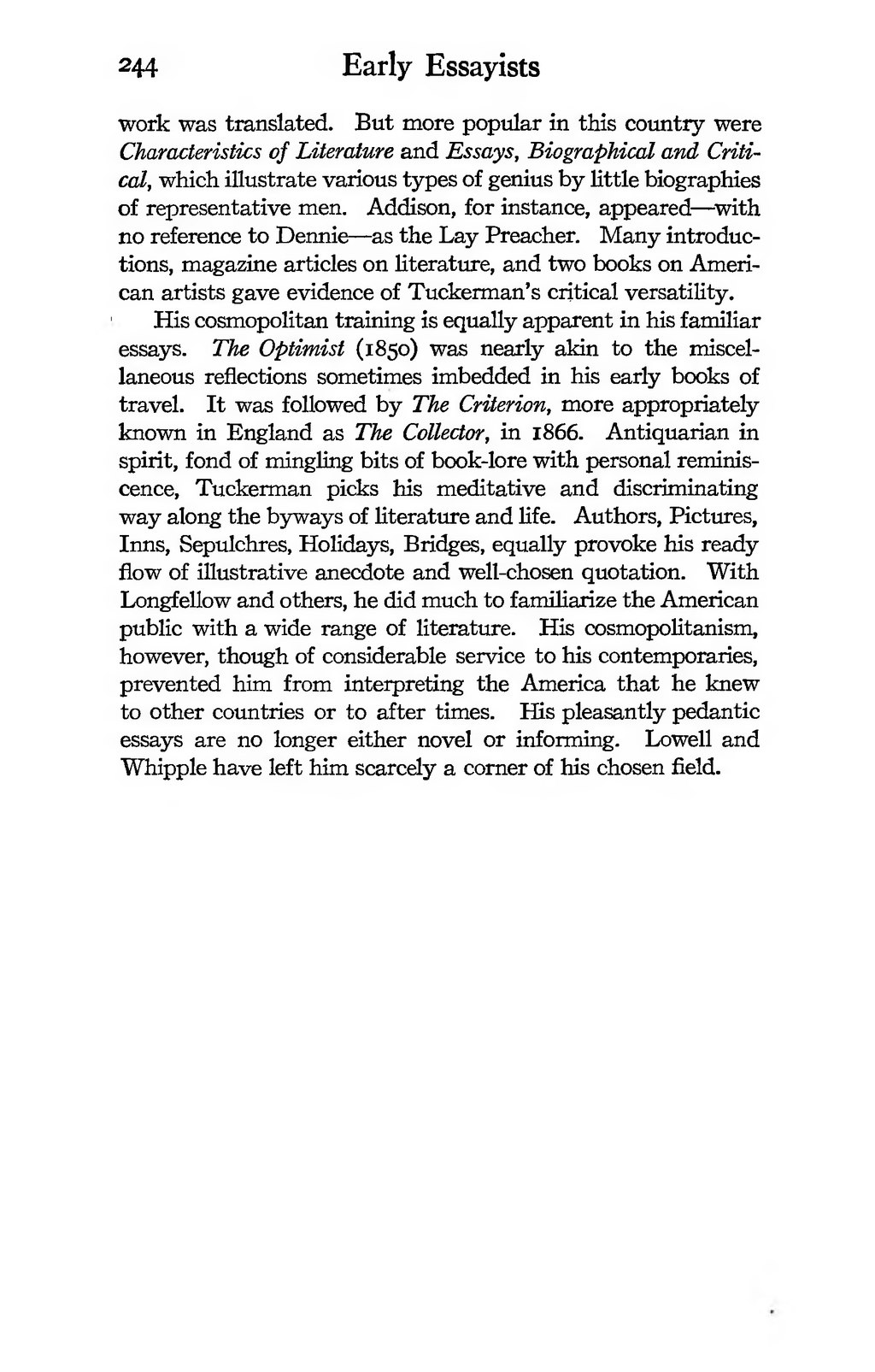work was translated. But more popular in this country were Characteristics of Literature and Essays, Biographical and Critical, which illustrate various types of genius by little biographies of representative men. Addison, for instance, appeared—with no reference to Dennie—as the Lay Preacher. Many introductions, magazine articles on literature, and two books on American artists gave evidence of Tuckerman's critical versatility.
His cosmopolitan training is equally apparent in his familiar essays. The Optimist (1850) was nearly akin to the miscellaneous reflections sometimes imbedded in his early books of travel. It was followed by The Criterion, more appropriately known in England as The Collector, in 1866. Antiquarian in spirit, fond of mingling bits of book-lore with personal reminiscence, Tuckerman picks his meditative and discriminating way along the byways of literature and life. Authors, Pictures, Inns, Sepulchres, Holidays, Bridges, equally provoke his ready flow of illustrative anecdote and well-chosen quotation. With Longfellow and others, he did much to familiarize the American public with a wide range of literature. His cosmopolitanism, however, though of considerable service to his contemporaries, prevented him from interpreting the America that he knew to other countries or to after times. His pleasantly pedantic essays are no longer either novel or informing. Lowell and Whipple have left him scarcely a corner of his chosen field.
